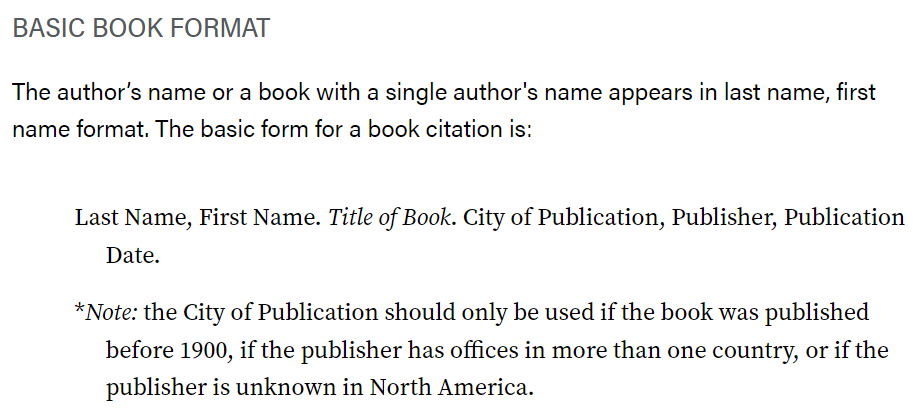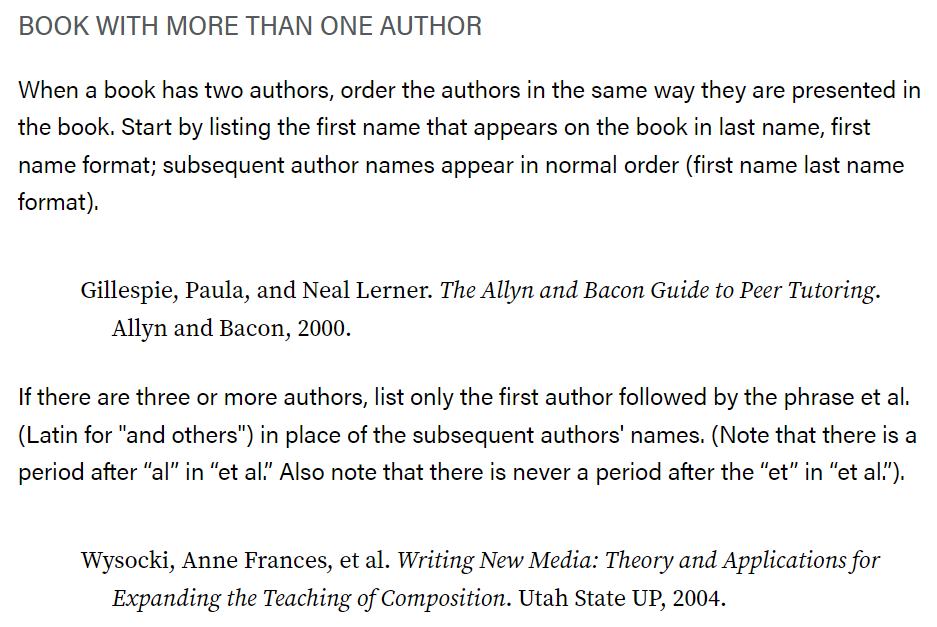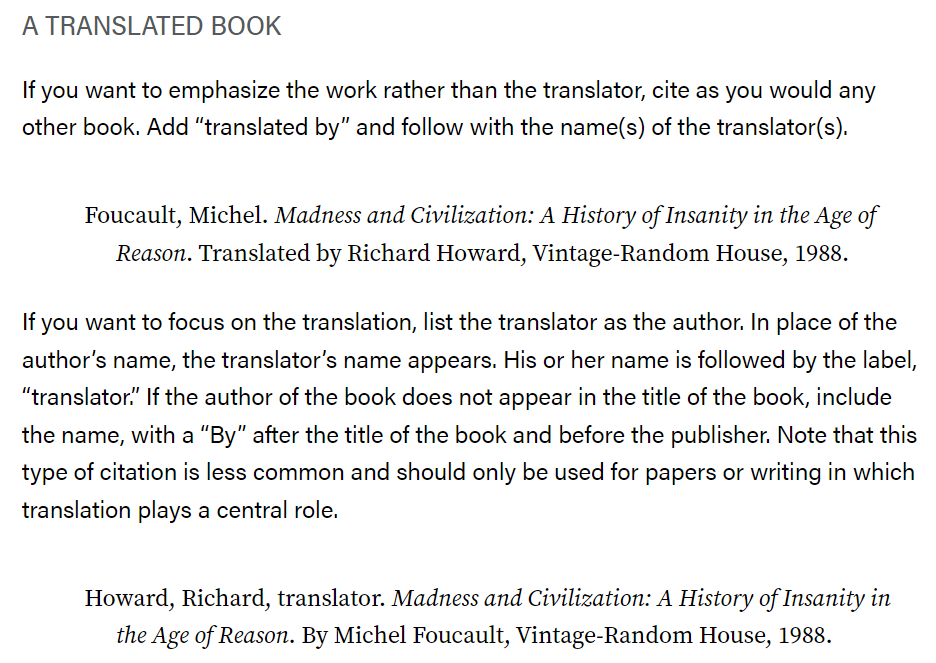Discover top guides, trends, tips and expertise from AIO Writers
How to Cite a Book in MLA: A Step-by-Step Guide
Julia McCoy
Thursday, 18th Apr 2024
You’ve just finished writing an amazing paper, but there’s one last hurdle: citing your sources. And not just any sources, but books. In MLA format. Cue the panic, right?
Don’t worry, I’ve been there too. Staring at a stack of books, wondering how on earth to condense all that information into a perfectly formatted citation. It’s enough to make your head spin.
But here’s the thing: citing a book in MLA doesn’t have to be a nightmare. In fact, with a few simple steps and some handy examples, you’ll be a citation pro in no time.
Let’s learn how to cite a book in MLA.
Table Of Contents:
- How to Cite a Book in MLA Format
- How to Cite E-Books and Online Books in MLA
- How to Cite Chapters and Sections of a Book
- Citing Special Types of Books in MLA
- FAQs – How to Cite a Book in MLA
- Conclusion
How to Cite a Book in MLA Format
As someone who’s been citing books in MLA for years, I know it can seem daunting at first. But trust me, once you get the hang of the basic format of how to cite a book, it becomes second nature.
Basic Book Citation Format
To cite a book in MLA format, you need the author’s name, the book title, the publication year, and the publisher. The basic format for a book citation in MLA style is:
Author’s Last name, First name. Book Title. Publisher, Publication Year.

In-Text Citations for Books
Now, let’s talk about in-text citations. Whenever you quote or paraphrase from the book, you need to include an in-text citation. For books, you include the author’s last name and the page number in parentheses.
Like this: (Smith 23).
Citing Books with Multiple Authors
But what if the book has multiple authors?
For a book with two authors, list both names in the order they appear on the title page, like this:
Author 1 Last Name, First Name, and Author 2 First Name Last Name. Book Title. Publisher, Year.
For three or more authors, list the first author followed by “et al.”
Like this: Author 1 Last Name, First Name, et al. Book Title. Publisher, Year.
In your in-text citation, you’d write: (Morris et al. 37).

Citing Translated Books
Translated books are also common sources. To cite one in MLA, include the author, title, translator, publisher, and year.
Like this:
Author Last Name, First Name. Translated Title. Translated by Translator First Name Last Name, Publisher, Year.

See? Not so bad once you break it down. Just remember, consistency is key with MLA book citations. Stick to the format, and you’ll be golden.
* All screenshots are from Purdue University OWL
How to Cite E-Books and Online Books in MLA
Now, I know what you’re thinking. “But what about e-books and online books? How do I cite those in MLA?”
Citing E-Books
For e-books, you follow the same basic format as print sources, but with a few additions. After the book title, you add the e-book format in square brackets.
Like this:
Author Last Name, First Name. Book Title [E-reader Version]. Publisher, Year. E-reader Name.
So, for example, a Kindle book would look like:
Doerr, Anthony. All the Light We Cannot See [Kindle Version]. Scribner, 2014. Amazon Kindle.
Citing Online Books
For online books, you follow a similar format, but instead of the e-book format, you include the URL or DOI at the end.
Like this:
Author Last Name, First Name. Book Title. Publisher, Year. URL or DOI.
For example:
Austen, Jane. Pride and Prejudice. Project Gutenberg, 2008. www.gutenberg.org/files/1342/1342-h/1342-h.htm.
In-Text Citations for E-Books and Online Books
In-text citations for e-books and online books follow the same format as print books. Use the author’s last name and page number (if available) in parentheses. If there are no page numbers, use a chapter or section name instead.
Like this:
(Doerr, “Werner”) or (Austen, ch. 3)
How to Cite Chapters and Sections of a Book
Alright, let’s dive into citing specific parts of a book, like chapters or sections. This is where things can get a little tricky.
Citing a Chapter in an Edited Book
First up, let’s talk about citing a chapter in an edited book. This is when a book has multiple chapters written by different authors, and there’s an editor who compiled them all together.
To cite a chapter in an edited book, include the chapter author’s name, the chapter title (in quotation marks), the book editor’s name (preceded by “Ed.”), the book title (in italics), the publisher, the year, and the chapter page range.
Like this:
Chapter Author Last Name, First Name. “Chapter Title.” Book Title, edited by Editor First Name Last Name, Publisher, Year, pp. Page range.
For example:
Montrose, Louis. “Elizabeth Through the Looking Glass: Picturing the Queen’s Two Bodies.” The Body of the Queen: Gender and Rule in the Courtly World, 1500-2000, edited by Regina Schulte, Berghahn, 2006, pp. 61-87.
Citing an Article in an Anthology or Collection
Next, let’s look at citing an article or work in an anthology or collection. An anthology is a collection of works, usually with a common theme, that are compiled into one book.
To cite a work in an anthology, you include the author’s name, the title of the work (in quotation marks), the title of the anthology (in italics), the editor’s name (preceded by “Ed.”), the publisher, the year, and the page range.
Like this:
Author Last Name, First Name. “Work Title.” Anthology Title, edited by Editor First Name Last Name, Publisher, Year, pp. Page range.
For example:
Chopin, Kate. “The Story of an Hour.” The Norton Introduction to Literature, edited by Kelly J. Mays, shorter 12th ed., W.W. Norton, 2016, pp. 278-80.
In-Text Citations for Chapters and Sections
For in-text citations of chapters or sections, you follow the same format as a regular book. Include the author’s last name and the page number (if available) in parentheses.
Like this: (Montrose 65) or (Chopin 279)
If you’re citing multiple works by the same author, include a shortened version of the chapter or section title to differentiate them.
Like this: (Montrose, “Elizabeth” 65).
Citing Special Types of Books in MLA
Alright, now let’s tackle some of the more unique book types you might come across in your research. I’m talking about the Bible, multivolume works, and books published before 1900.
Citing the Bible
First up, let’s talk about citing the Bible. In MLA, you don’t need to include the Bible in your works cited list, but you do need to include an in-text citation.
For your in-text citation, include the book, chapter, and verse (abbreviated), like this: (Gen. 1.1-2).
If you’re using a specific version of the Bible, include that in your first citation, like this: (The Holy Bible: King James Version, Gen. 1.1-2).
In subsequent citations, you can just use the book, chapter, and verse: (Gen. 1.3-4).
Citing Multivolume Works
Next, let’s look at citing multivolume works. These are books that are published in multiple volumes, often with different titles for each volume.
To cite a specific volume, include the author’s name, the volume title (in italics), the volume number, the publisher, and the year, like this:
Author Last Name, First Name. Vol. Title. Vol. Number, Publisher, Year.
For example:
Faulkner, William. The Sound and the Fury. Vol. 2, Vintage Books, 1990.
In your in-text citation, include the author, volume number, and page number (if available), like this: (Faulkner 2: 47).
Citing Books Published Before 1900
Finally, let’s talk about citing books published before 1900. The format is slightly different for these older works.
Include the author’s name, the book title (in italics), the city of publication, the publisher (if known), and the year. If there are multiple publication years, use the most recent one and include the original year in parentheses at the end.
Like this:
Author Last Name, First Name. Book Title. City of Publication, Publisher (if known), Year (Original Year, if different).
For example:
Austen, Jane. Pride and Prejudice. London, T. Egerton, 1813 (1796).
In your in-text citation, include the author and page number (if available), as usual: (Austen 45).
FAQs – How to Cite a Book in MLA
How do you cite a book title in-text MLA?
When citing a book in-text, just write the author’s last name and page number in parentheses right after the quote or reference.
How do you cite a book in an essay?
List the author, book title in italics, publisher, publication year, and location on your works cited page.
What is the MLA format for a book quote?
Cite with the author’s last name and page number in parentheses. No comma is needed between them.
How do you cite a reference from a book?
Type the author’s surname followed by page numbers then put them inside parentheses.
Conclusion
There you have it — examples of how to cite a book in MLA format. From single authors to edited collections, you now have the tools to tackle any book citation that comes your way.
Remember, the key is to take it step by step. Start with the basic elements, then add in the extra details as needed. And don’t forget to double-check your work against the latest MLA guidelines.
With a little practice and patience, citing books in MLA will become second nature. No more stressing over punctuation or wondering if you’ve got the format right. You’ve got this!

UNLOCK YOUR POTENTIAL
Long Headline that highlights Value Proposition of Lead Magnet
Grab a front row seat to our video masterclasses, interviews, case studies, tutorials, and guides.



